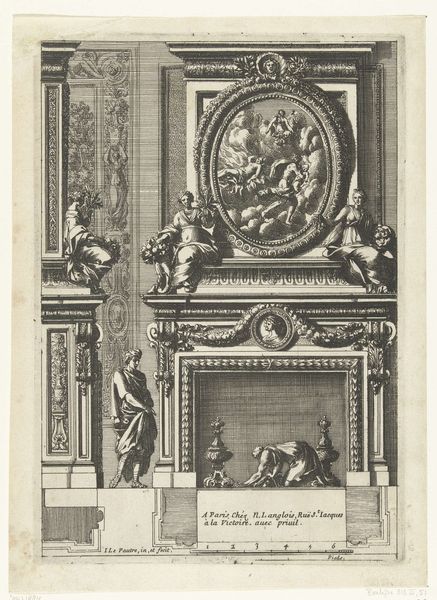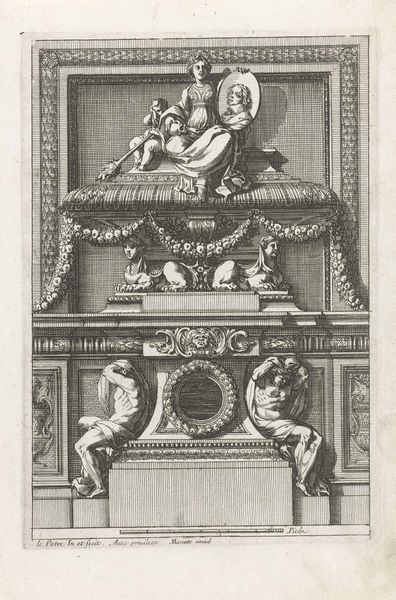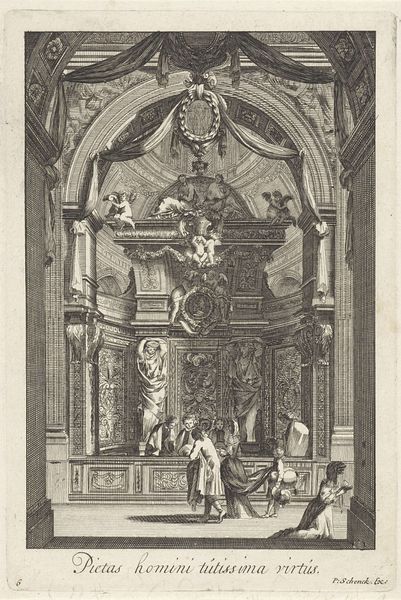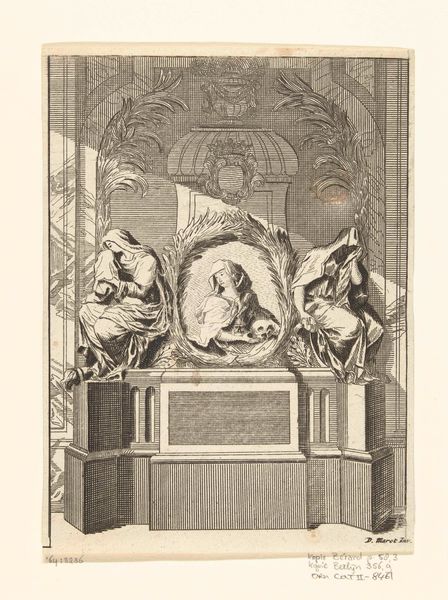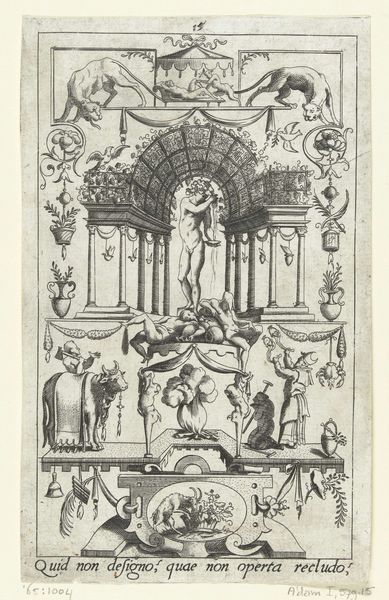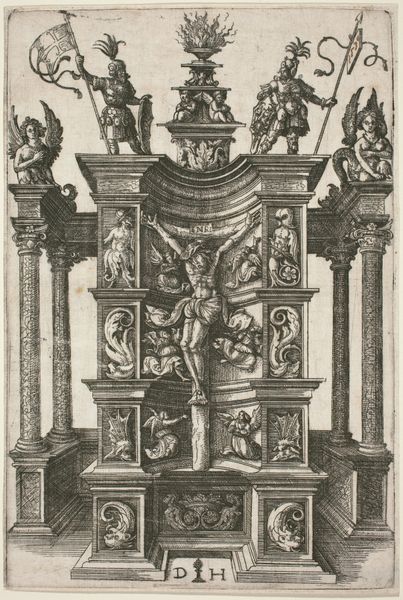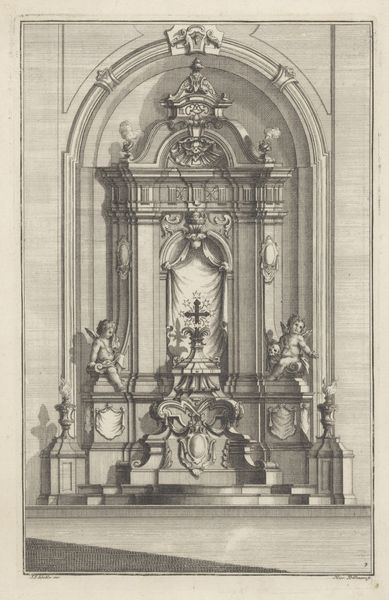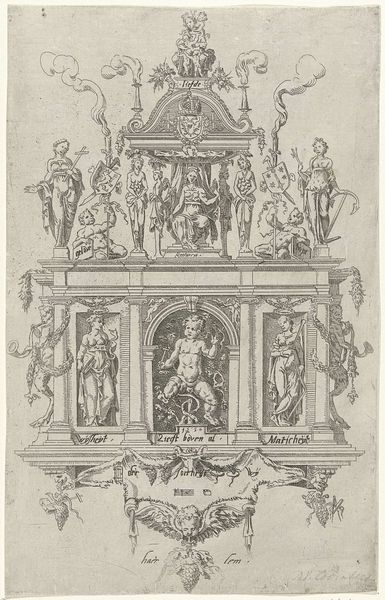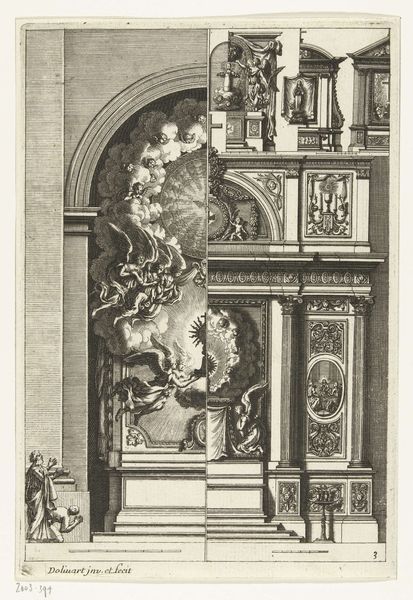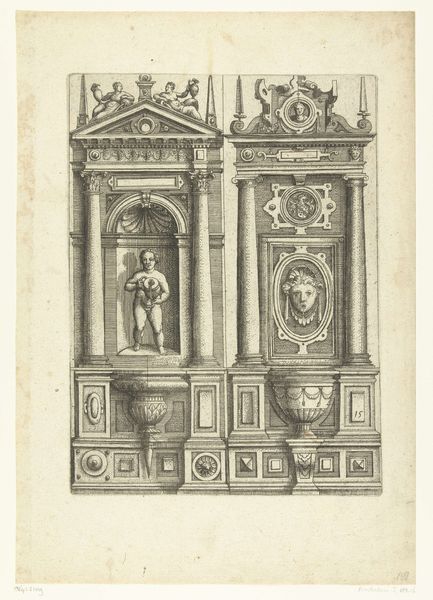
print, engraving, architecture
#
baroque
# print
#
old engraving style
#
engraving
#
architecture
Dimensions: height 223 mm, width 152 mm
Copyright: Rijks Museum: Open Domain
Editor: This print, “Grafmonument bekroond met urn,” from 1661 by Jean Lepautre, features incredibly intricate engraving work. It looks almost like a stage set. What is it that strikes you when you look at this piece? Curator: I see the confluence of craft and commodity. Prints like these weren’t merely aesthetic objects; they were mass-produced for consumption. Lepautre, an engraver, wasn't just an artist but a businessman producing goods for a burgeoning market, fueling a desire for luxury and architectural fantasy amongst the rising bourgeoisie. Think about the material – ink on paper – a relatively cheap medium transforming architectural aspiration into a replicable commodity. Editor: So you're saying it’s less about high art and more about the democratization of design? Curator: Precisely! Look at the details - the urn, the sculpted figures. These elements would’ve been incredibly expensive to commission in real life. Through engraving, Lepautre made aspects of such opulence accessible, feeding the growing demand for stylish interiors and personal expression via affordable ornamentation. The material transforms the socio-economic status associated with the monument into something widely available. Editor: That makes me consider who had access to art and architectural design then. It must have been such a novel idea to bring these visuals to a wider audience. Curator: Indeed. How does that expanded access change your perception of the work? Editor: It really reframes my understanding, seeing it as more than just a pretty image, and understanding the economic realities of art production. Thanks for opening my eyes to that. Curator: My pleasure. Looking through the lens of materiality unveils so much about power structures and consumption in any period.
Comments
No comments
Be the first to comment and join the conversation on the ultimate creative platform.
